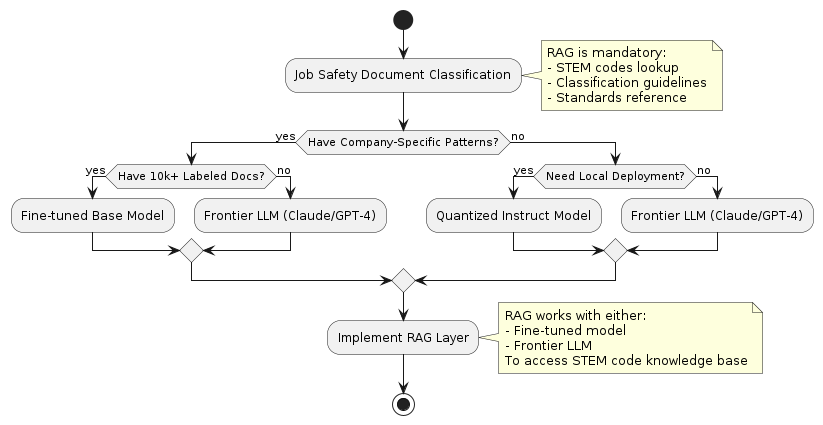Large Language Models (LLMs)
An Overview on LLMs
What is an LLM?
Remember LLMs are text predictors, so we can customize the instruction to anything we like! Large Language Models (LLMs) are reasoning engines trained on hundreds of billions of words, processing and analyzing data through trillions of connections (tokens). They exist in two forms:
| Aspect | Base LLMs | Instruction Tuned LLMs |
|---|---|---|
| Definition | Predict next token based on training data | Base models fine-tuned to follow instructions (often with RLHF) |
| Examples | LLaMA 2 Base, Mistral Base, BLOOM | LLaMA 2 Chat, Claude, GPT-4 |
| Availability | Mainly open-source models | Commercial APIs and open-source chat models |
| Primary Use | Foundation for further training | Direct user interaction and task completion |
| Sample Input | "The capital of France is" | "What's the capital of France?" |
| Sample Output | "Paris the most populous city in France and serves as the country's major" (continues predicting) | "Paris is the capital of France." (direct answer) |
All commercial LLMs (like GPT-4, Claude, Gemini) are instruction-tuned versions of their private base models. Open-source projects often release both base and instruction-tuned versions, enabling further customization by the community.
| Current Frontier / SOTA Models 2025 | Mobile models 2025 | Laptop models 2025 |
|---|---|---|
| Chat.com | Microsoft Phi | DeepSeek R |
| grok.com | Google Gemma | Cohere Command R |
| Claude.ai | IBM Granite | AI21 Jamba |
| Gemini.google | Mistral | Alibaba Qwen |
| meta.ai |
Key Capabilities
API Integration, Iterative Processing, Summarizing, Inferring, Transforming, Expanding
Important Notes:
- LLMs are reasoning engines, not knowledge stores
- Reliability comes through RAG (Retrieval-Augmented Generation)
- Should not be used as primary information sources
- Accuracy depends on clear, complete instructions
Effective Prompting Principles
- Use delimiters (```)
- Request structured outputs (CSV, JSON)
- Include condition checks for responses
- Implement few-shot prompting (provide examples)
AGI Development Levels
| Level | DeepMind (Nov/2023) | OpenAI (Jul/2024) |
|---|---|---|
| Level 0 | No AI | - |
| Level 1 | Emerging (Equal to or somewhat better than an unskilled human) | Chatbots (AI with conversational language) |
| Level 2 | Competent (At least 50th percentile of skilled adults) | Reasoners (Human-level problem solving) |
| Level 3* | Expert (At least 90th percentile of skilled adults) | Agents (Systems that can take actions) |
| Level 4 | Virtuoso (At least 99th percentile of skilled adults) | Innovators (AI that can aid in invention) |
| Level 5 | Superhuman (Outperforms 100% of humans) | Organizations (AI that can do the work of an organization) |
Decision Tree for Model Selection

Model Selection Guide
| Type | Use Cases | Scenarios |
|---|---|---|
| Fine-Tuning | RAG Implementation, Agent Development, One-Shot Learning | Small Dataset (under 300 rows): Use Instruct Models; Large Dataset (over 1000 rows): Base Models |
| Instruct Models | Limited Training, Direct Interaction | Prompt-Response Tasks, Out-of-box Solutions |
| Base Models | Large Datasets, Custom Training | Deep Customization, Domain Tasks |
Model Deployment Options
| Model Type | When to Use | Key Advantages |
|---|---|---|
| External Frontier LLMs | When you need cutting-edge performance and have high-end hardware | State-of-the-art performance, access to latest improvements |
| Local/Quantized Models | When you need economical solutions or local/edge deployment | Lower resource requirements, faster inference times |
